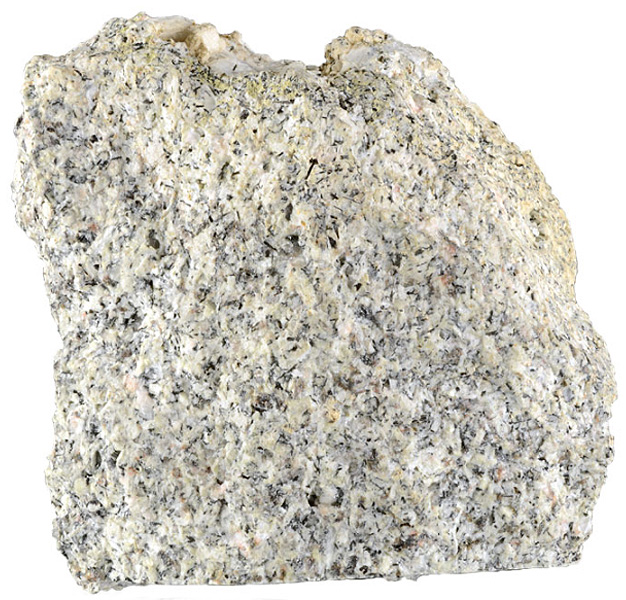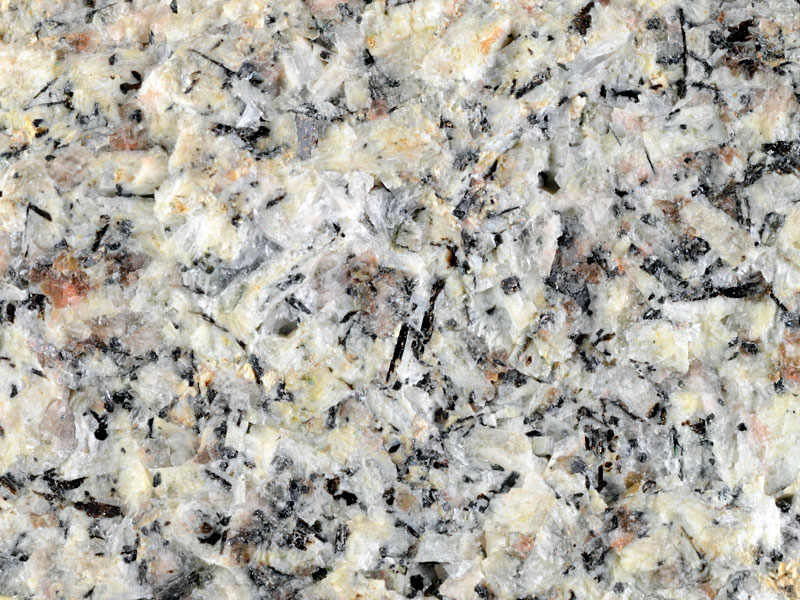
Fact sheet
This nepheline syenite is part of a dolerite intrusion at Cnoc Rhaonastil, Isle of Islay, Scotland that formed in the Paleogene period as part of the North Atlantic volcanic province. The rock is unusual in that the magma evolved from alkali olivine-dolerite by crystal fractionation at low pressure. The intrusion is an example of an upper-crustal magma chamber, in which the alkali olivine-basalt magma crystallised in situ. Research has shown that this represents the distended head of a large dyke in which a single pulse of magma was emplaced and subsequently crystallised without significant interaction with the local country rock.
The thin section contains green-coloured aegirine pyroxene with characteristic patchy colour variations, biotite mica, and large grains of nepheline that have undergone alteration and exsolution to plagioclase. Patches of analcime zeolite are present, exhibiting characteristic radial growth patterns.
The United Kingdom Virtual Microscope (UKVM) collection consists of igneous, sedimentary and metamorphic rocks from around the UK.
It is intended as a teaching resource, helping to tell the story of the common rock types and how they form, and reflecting the history of the UK at the margins of the continent of Europe. The collection is a series of teaching sets, for example igneous rocks from the North Atlantic Igneous Province and SW England; high-temperature metamorphic rocks from Scotland and low-temperature metamorphic rocks from Wales; and sedimentary rocks, including English limestones and sandstones.







